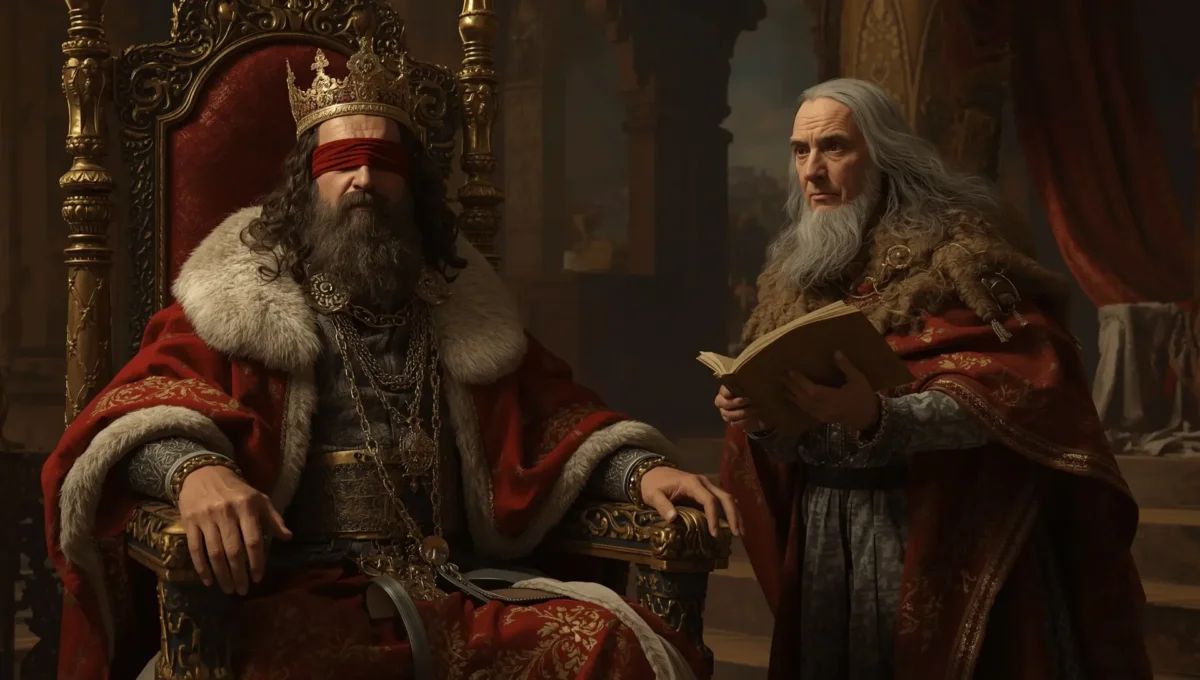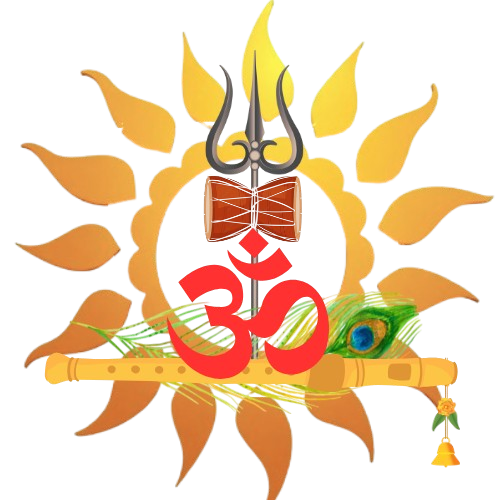Translation of Bhagavad Gita Shloka Verse 1.1 in English:
धृतराष्ट्र उवाच:
धर्मक्षेत्रे कुरुक्षेत्रे समवेता युयुत्सवः।
मामकाः पाण्डवाश्चैव किमकुर्वत सञ्जय।।
In English :
Dhritarashtra Uvacha:
Dharmakshetre Kurukshetre Samavetā Yuyutsavah
Māmakāh Pāndavāshchaiva Kimakurvata Sanjaya
Full Line-by-Line Phonetic Breakdown of Bhagavad Gita Chapter 1 Verse 1:
- Dhritarashtra Uvācha
- Dhri-ta-raash-tra U-vaa-cha
- Dharmakshetre Kurukshetre Samavetā Yuyutsavah
- Dhar-ma-kshe-tre Ku-ruk-she-tre Sa-ma-ve-taa Yu-yut-sa-vah
- Māmakāh Pāndavāshchaiva Kimakurvata Sanjaya
- Maa-ma-kaah Paan-da-vaash-chai-va Ki-ma-kur-va-ta San-ja-ya
Dhritarashtra said: In the sacred land of Kurukshetra, where righteousness prevails, my sons and the sons of Pandu, who have gathered with the intent to battle—what are they doing, O Sanjaya?
Bhagavad Gita synopsis for this Verse 1.1:
In this journey of Bhagavad Gita Summary 1.1, we can say this verse sets the stage for the Bhagavad Gita. King Dhritarashtra, who is blind, asks his advisor Sanjaya about the events narrate the battlefield of Kurukshetra. The battlefield is called Dharma Kshetra (the field of righteousness), which delicately hints that righteousness will be victorious. Dhritarashtra’s wording reflects his bias— This question also reveals his inner fear, as he knows that the Pandavas, on the side of dharma (righteousness), have a moral upper hand. This verse introduces the conflict between dharma (righteousness) and adharma (unrighteousness), which is the central theme of the Bhagavad Gita.

5 different Perspective for understanding the Essence of Bhagavad Gita 1.1:
Let’s Start the lesson with Simple Interpretation based on Bhagavad Gita Summary 1.1:
King Dhritarashtra, blind not just in sight but in soul, asks his advisor Sanjaya about what is happening on the battlefield of Kurukshetra. He wants to know what both sides—his sons (the Kauravas) and the Pandavas—are doing as they prepare for war. His question also shows his partiality because he calls his sons “mine” (māmakāḥ) but does not include the Pandavas in that category. The word “Dharma Kshetra” (field of righteousness) suggests that truth and justice will ultimately prevail in the battle.
Philosophical Insight & Understanding of Bhagavad Gita Chapter 1.1
This Verse from Bhagavad Geeta symbolizes the eternal battle between good and evil, righteousness and unrighteousness. Dhritarashtra represents ignorance and attachment, while Sanjaya, his advisor, represents wisdom and clarity. The battlefield, Kurukshetra, is not just a physical place but also a metaphor for the human mind, where inner conflicts between right and wrong take place. Dhritarashtra’s fear reflects the inner struggle of anyone who knows they are on the wrong side but still clings to attachment and ego.
What are the Psychological Understandings of Bhagavad Gita 1.1 in Daily Life ?
1. The Illusion of Attachment and Possessiveness
Dhritarashtra refers to his sons as māmakāḥ—”my sons,” while distancing himself from the Pandavas.
- We often struggle to be fair in relationships and workplaces because of personal biases. The verse reminds us to detach from emotional possessiveness and make unbiased, ethical choices.
2. Fear of Justice and Consequences
Dhritarashtra knows the battle is taking place on Dharma-Kshetra, the field of righteousness. He fears the outcome, because deep down, he knows his sons have acted unreasonably. This represents the psychological conflict between denial and truth.
- When we act unethically or support the wrong side due to personal attachments, we experience inner anxiety. The mind tries to suppress guilt, but truth has a way of surfacing. Facing our fears and aligning with righteousness helps us achieve peace.
3. The Blindness of Ego and Self-Interest
Dhritarashtra is literally blind, but his greater blindness is his inability to see the truth. His attachment to his sons clouds his judgment, preventing him from taking the right path.
- We often ignore uncomfortable truths to protect our ego. Whether it’s avoiding responsibility, blaming others, or refusing to change, our ego blinds us like Dhritarashtra. True wisdom comes from self-awareness and humility.
4. The Battle of the Mind – Kurukshetra Within
- Kurukshetra is not just an external battlefield; it represents the inner battlefield of the mind, where desires, duties, fears, and moral values clash. Every day, we face dilemmas between what is right and what is easy, between duty and attachment.
- Just as Arjuna will soon face his inner battle, we too must navigate tough choices. The verse reminds us to approach life’s struggles with clarity, wisdom, and courage rather than emotional impulsiveness.
5. Seeking Inner Vision – The Role of Sanjaya
Sanjaya, the narrator, represents higher awareness and detached wisdom. While Dhritarashtra is blinded by emotion, Sanjaya sees the battle objectively.
- In moments of confusion, we need an inner Sanjaya—a voice of wisdom that can help us see beyond attachment and fear. Meditation, self-reflection, or seeking advice from wise mentors can guide us toward clarity.
Conclusion – A Mirror to Our Minds
By recognizing these psychological patterns in ourselves, and ofcourse, with the help of this simple, easy to grasp summary of Bhagavad Gita 1.1, we can learn to detach from bias, face our fears, overcome ego, and seek inner wisdom. The battlefield of Kurukshetra exists within us every day, and the Gita guides us to navigate it with courage and clarity.
We can also analyze the Historical Perspective of this Great “Song of God”:
Bhagavad Gita 1.1 marks the beginning of the Kurukshetra war, a pivotal event in the Mahabharata that shaped Indian history and philosophy.
Kurukshetra – The Sacred Battlefield: Known as Dharma-Kshetra, Kurukshetra was believed to be a land where righteousness prevails, making Dhritarashtra anxious about the war’s outcome.
Dhritarashtra’s Moral Failure: As king of Hastinapura, he failed to uphold justice, allowing his sons’ unethical actions to escalate into war.
The Mahabharata’s Turning Point: This verse sets the stage for the great battle, where the fate of two dynasties will be decided.
Symbol of Righteousness vs. Adharma: The war represents the eternal struggle between dharma (righteousness) and adharma (unrighteousness).
The Role of Sanjaya: As the narrator, Sanjaya provides a divine, unbiased account of the war, highlighting its historical and spiritual significance.
This verse serves as a reminder of the consequences of moral weakness and the ultimate victory of righteousness.
Ending this Discussion with the Spiritual Viewpoint of Bhagavad Gita 1.1:
This verse can be seen as an allegory for the human soul’s journey. The battlefield represents life, where every individual face moral and ethical dilemma. Dhritarashtra represents the ego and worldly attachments, while Sanjaya symbolizes divine insight. The question he asks reflects the fundamental human curiosity—what will happen when good and evil clash? The Bhagavad Gita, through its teachings, provides the answer by guiding one toward righteousness (dharma).
How can we apply these teachings in teamwork?
Applying the Bhagavad Gita’s teachings in teamwork can create a harmonious, productive, and purpose-driven environment. By grab the inner meaning described in this Bhagavad Gita summary 1.1 ,we can integrate its principles into collaborative efforts: As a team, we should align on our collective responsibilities and shared goals. When each member understands their role and contributes sincerely, the team functions like a well-orchestrated unit. It’s important for us to focus on how our individual strengths serve the greater purpose. #Shared Purpose #Dharma
Conclusion:
Bhagavad Gita Chapter 1, Verse 1, provides a profound introduction to the big discourse. It is not merely a king’s inquiry but a reflection of the eternal human struggle between righteousness and attachment. This verse teaches us the importance of self-awareness, detachment, and moral clarity in our own lives.
FAQs:
What does “Dharma-Kshetra” mean?
Dharma-Kshetra means “the field of righteousness,” emphasizing the moral significance of the battlefield.
Why was Dhritarashtra worried?
Dhritarashtra was concerned about the war’s outcome and feared that the righteousness of Kurukshetra would Favor the Pandavas.
How does Bhagavad Gita 1.1 connect to the rest of the Bhagavad Gita?
This verse sets the stage for Krishna’s teachings by highlighting human dilemmas and moral conflicts.
What is the spiritual significance of this verse?
It represents the internal battle between righteousness and attachment that every individual faces.
How can we apply the teachings of this verse in daily life?
By recognizing our biases, making ethical decisions, and seeking wisdom in difficult situations.
What is the main message in Bhagavad Gita chapter 1?
Chapter 1 sets the emotional and ethical context, paving the way for Krishna’s guidance in subsequent chapters. It captures the universal human struggle with decision-making, morality, and purpose.

